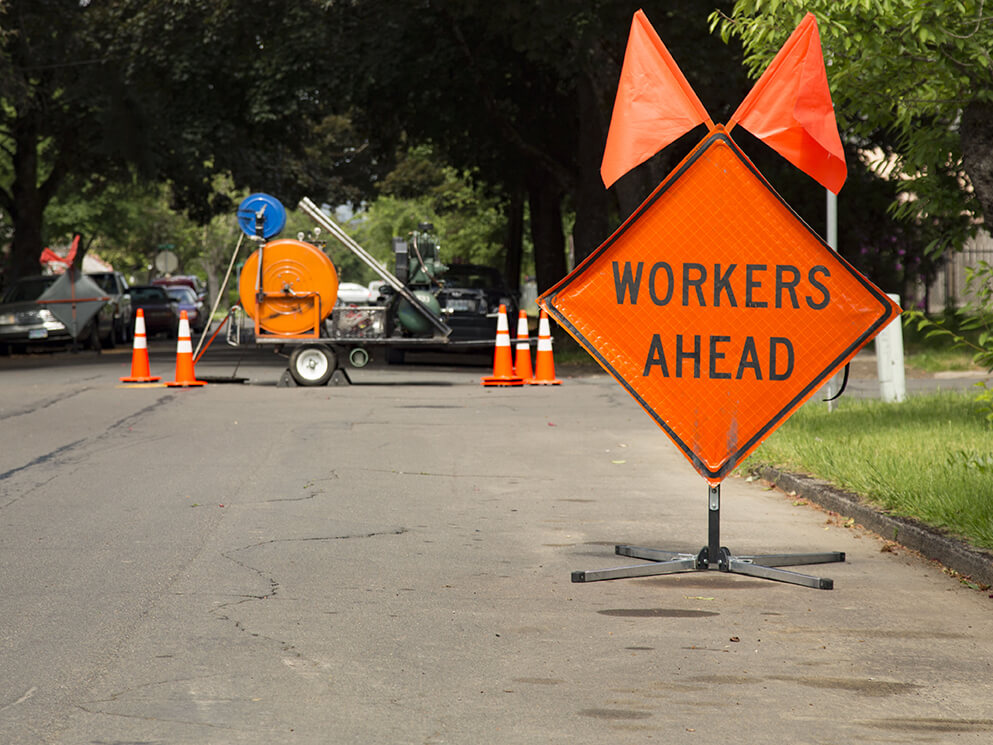Work Zone Safety
Rebuilding along with improvements within our rights of way will always be necessary and this work often causes the public to be continuously met with challenges of driving through and around the work zone of employees. What is the best way to keep everyone safe? The answer is through the Department of Transportations (DOT) with Temporary Traffic Control (TTC) formerly referred to as Maintenance of Traffic (MOT).
Meeting the national requirements for work zone traffic control is a critically important responsibility. The national requirements are found in Part 6 of the Manual on Uniform Traffic Control Devices (MUTCD) which promotes driver and worker safety during roadway maintenance projects. Supervisors and selected employees should be trained and certified in TTC / MOT standards. Chapter 6a Temporary Traffic Control.
Tree trimming, landscaping, utility service repairs, light fixture maintenance, traffic signal repair and other construction or road maintenance are among the tasks that often require public entity employees to work in or alongside a right of way that is normally used for vehicle or pedestrian traffic.
Below are few important tips to help protect yourself from being struck by vehicular traffic while working in the right of way. These procedures will also assist the public to safely avoid hazards that often interrupt the flow of vehicular and pedestrian traffic within your work zone.
- Always wear an approved orange warning vest while working in or alongside any public right of way.
- “Workers Ahead” signs should be placed well in advance of the work in both directions during operations.
- Adequate warning signs and barricades should be used whenever construction, maintenance or repair work is performed in any public right of way.
- Notify the appropriate law enforcement agency before any street is completely closed for maintenance or repair work.
- When a portion of a street has been closed and equipment is being operated in lanes left open to traffic, a flag person should be provided to control the traffic.
- When work crews perform emergency work in a posted traffic lane during peak traffic periods, the proper law enforcement agency should be notified of the work location, the time work began, and the estimated time of completion.
- When road surfaces are repaired, manholes opened or excavations dug, adequate hazard warnings should be posted before work is begun. A minimum amount of the right of way (consistent with safety requirements) should be blocked and the traffic efficiently rerouted.
- If repair work obstructs a traffic lane and compresses several lanes of traffic into fewer lanes, adequate warning signs and barricades should be placed to warn motorists well in advance of the obstruction. If manhole openings and excavations constitute a hazard to pedestrians, adequate barricades and rerouting of walkways should be provided.
- When patching roadways and/or filling cracks work should be done on one-half of the roadway at a time.
